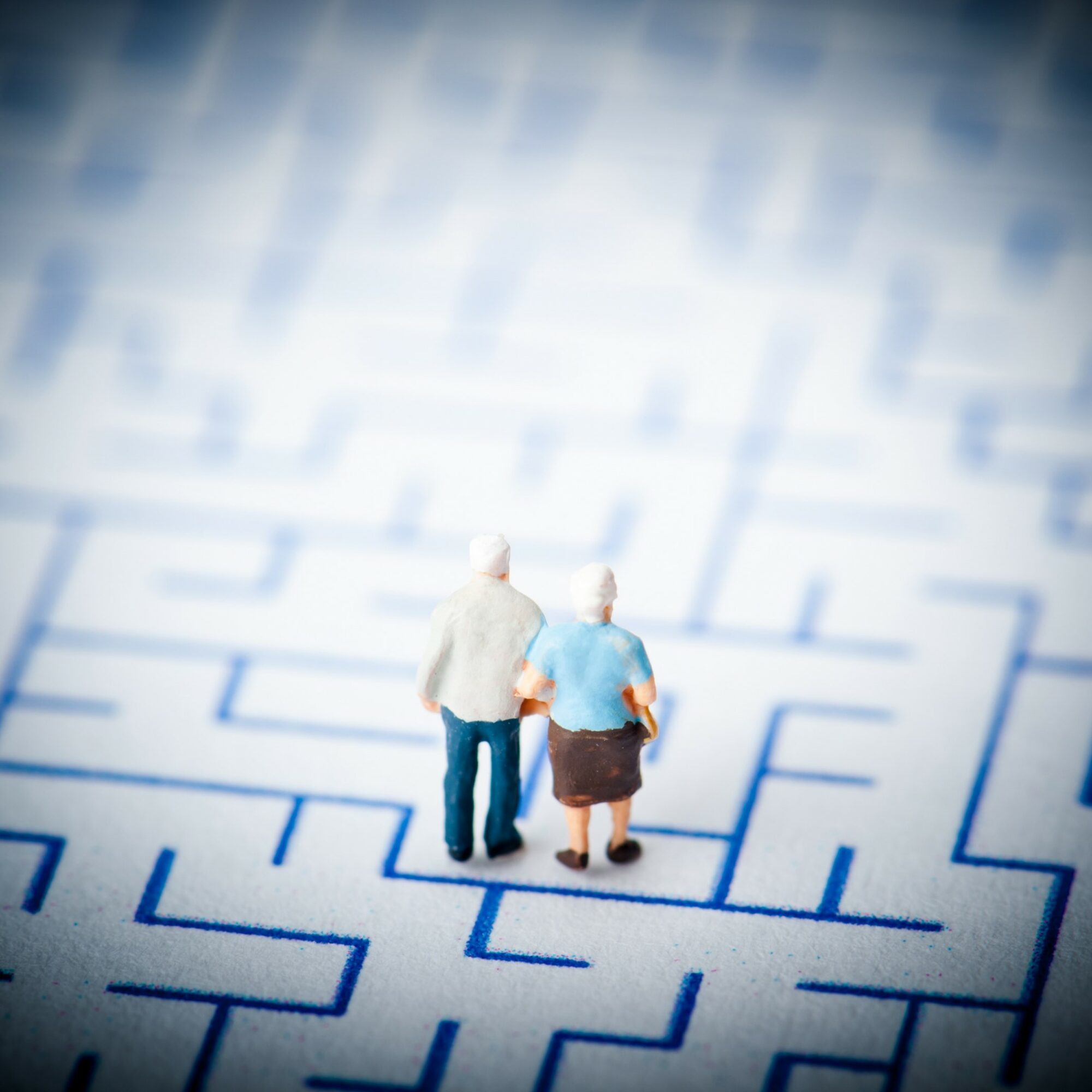AI and dementia diagnosis, assessment and monitoring
Multiple web-based and app-based cognitive assessment tools have been created using AI with the aim of detecting impairments in cognitive function. Furthermore, the way in which people use technology and changes in their patterns of use have been identified as early indicators of emerging cognitive decline.
Concerning dementia diagnosis, machine learning approaches, a subset of artificial intelligence, have been increasingly used with imaging data for diagnosis and disease progression. These approaches have also been applied to non-imaging studies including linguistic analysis and monitoring of gait patterns over time. As an example, Pfizer and IBM Research teamed up to develop a new AI model using short, non-invasive and standardized speech tests to help predict the potential onset of Alzheimer’s disease within healthy individuals with higher accuracy than predictions based on clinical scales. The goal is to ultimately help clinicians assess an individual’s risk of developing Alzheimer’s disease and allow an earlier intervention.
Technology can also be used for disease monitoring and has the potential to both detect progression of dementia over time and to provide prompts and support individuals in maintaining their activities. The COACH system (Cognitive Orthosis for Assisting Activities in the Home) is an intelligent environment prototype meant to assist people with dementia in completing daily tasks, such as hand washing (figure 1). The system uses a variety of components to track and prompt an individual who may have difficulty remembering the steps involved in a particular activity, reducing dependence on human caregivers while offering people with dementia less invasive assistance. Additional examples of cognitive assistive technologies combine sensors with AI and machine learning embedded in living environments to create “smart homes”, which can detect and analyze health and other events, as well as support cooking, dressing and reduce demands for caregiving.
Another technological focus in dementia relates to social and leisure activities, which greatly impact the patients’ quality of life. Multiple technology projects involve musical memory, which is relatively spared in dementia, or relate to other forms of art, including interactive art installations for care homes and art therapy programs. Furthermore, since orientation and route-finding can be challenging for dementia patients, several tools have also been developed to support outdoor activities, including smart phones offering functionalities to support wayfinding and identify indicators of disorientation to support navigation prompting, as well as virtual cycling or navigating virtual environments.
Supporting social activities is also key for the wellbeing of dementia patients and to prevent further cognitive decline. Some AI-based tools have been developed with this aim, like CIRCA (Computer Interactive Reminiscence and Conversation Aid), a multimedia touchscreen application that promotes social interaction, benefiting caregiving relationships and improving cognition and quality of life in people with dementia.
AI and dementia caregiving and management
Caregiving is another key target of dementia technology, and AI can potentially support informal caregiving and the delivery of care remotely. Recent projects have coupled robots with remote monitoring using sensors and videoconferencing to deliver virtual visits to dementia patients. Additional robotic-based applications that have been explored include supporting dementia patients in food preparation, eating and participation in recreational activities in care homes.
In terms of care management, the Internet of Things (IoT) is facilitating the connection between items in the real world and computer systems, providing data more easily, efficiently and economically. IoT in dementia research involves early detection through in-home sensors, wearable monitoring and integration of devices for healthcare management. Indeed, dementia medical providers, caregivers and family members are taking advantage of IoT to provide additional support to the patients. With a combination of IoT, AI and automated systems, dementia patients can be taught how to use devices to monitor their health and help them with routine activities.
The positive impact of IoT and AI is not restricted to dementia patients, but also expands to caregivers and family members. For example, when dementia patients begin to wander as cognitive disorder progresses, wireless technology and motion sensors attached to wristbands, clothing, or shoe soles, can be used to track patients and send real-time notifications on the patient’s location or status to their caregivers via internet-connected wireless devices. These tools can also collect and store data on dementia patients for analysis by a doctor or for use by researchers. An example of such tool is the AltumView Sentinare 2 Smart Activity Sensor, which uses AI and a wireless network to provide around-the-clock monitoring of a senior’s movement and activities. Sentinare 2 can detect emergencies, such as falls, waves for help, or when people with dementia start wandering. The device reports these incidents in real-time via an app on the mobile devices of caregivers or family members. Importantly, the device respects the privacy of the patient and transmits only stick figure data instead of videos (figure 2).
Future directions for AI and other technologies in dementia care pathway
The application of technology in dementia has an enormous potential in the future and will likely include nanotechnology for brain damage repair and for drug delivery. New means of data collection, monitoring technologies, population surveillance, as well as data mining and modelling will likely contribute to accelerating the development of preventive therapeutics for dementia.
One of the major focus of these technological developments will be early detection and diagnosis of the disease. However, this is challenging as most investigations are performed when individuals already present cognitive decline, which is already a late symptom and results from alterations that have been taking place in the brain over years or decades.
In addition, several key questions remain open regarding the potential of AI-based technologies for dementia research and care. These are mainly related with the interpretation of deep learning results, with the integration of data from different AI-related modalities or different cohort studies, as well as with how to embed ethical considerations in artificial intelligence decisions. Answering these questions and tackling the low adoption rate to these tools, probably associated with to lack of awareness or challenges in accessibility (including financial) and support, will be key for the success of AI in dementia.
AI-based tools have the potential to tackle many of the perceived issues associated with dementia and can greatly contribute to the patients’ autonomy and quality of life. Furthermore, in the future these tools may enable the early detection of potential dementia patients, before the onset of any cognitive decline, enabling an early intervention. Technology can also contribute both directly and indirectly to caregiving by reducing demands on families and formal services, which highly contribute to the economic costs of dementia and the extreme burnout in dementia caregivers nowadays.
At Alcimed, we are actively investigating new opportunities and innovations in dementia and we are ready to explore them for our clients!
About the author,
Sara, Senior Consultant in Alcimed’s Healthcare team in Germany



